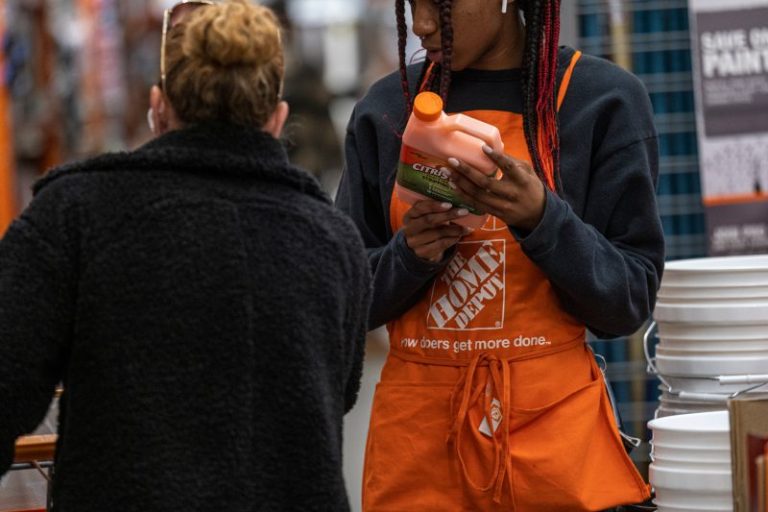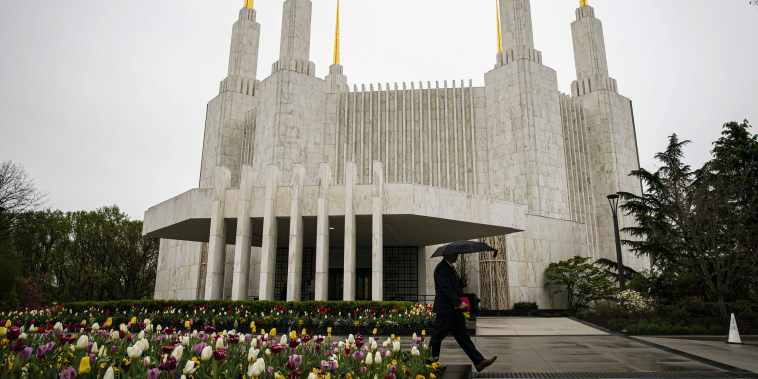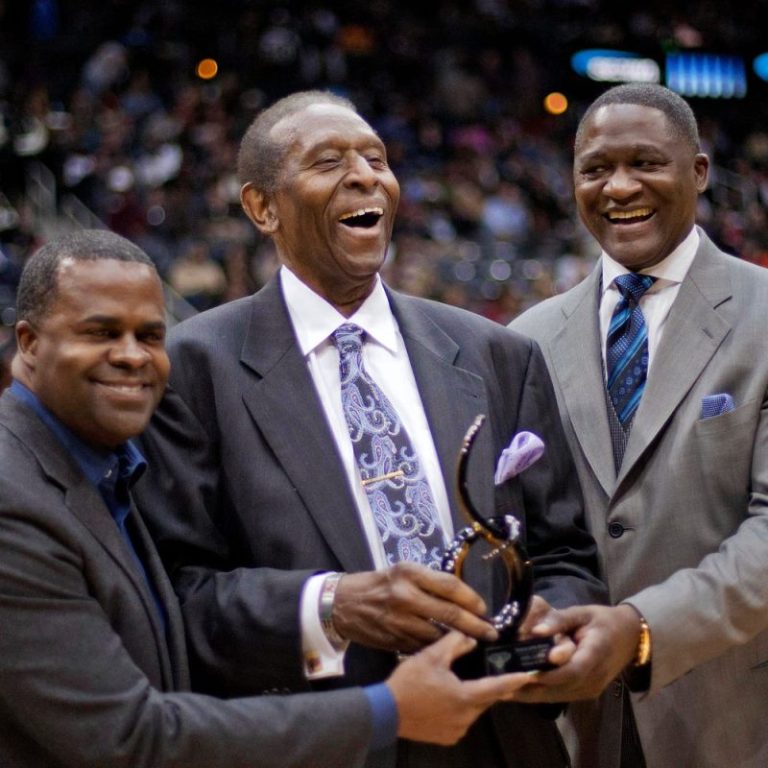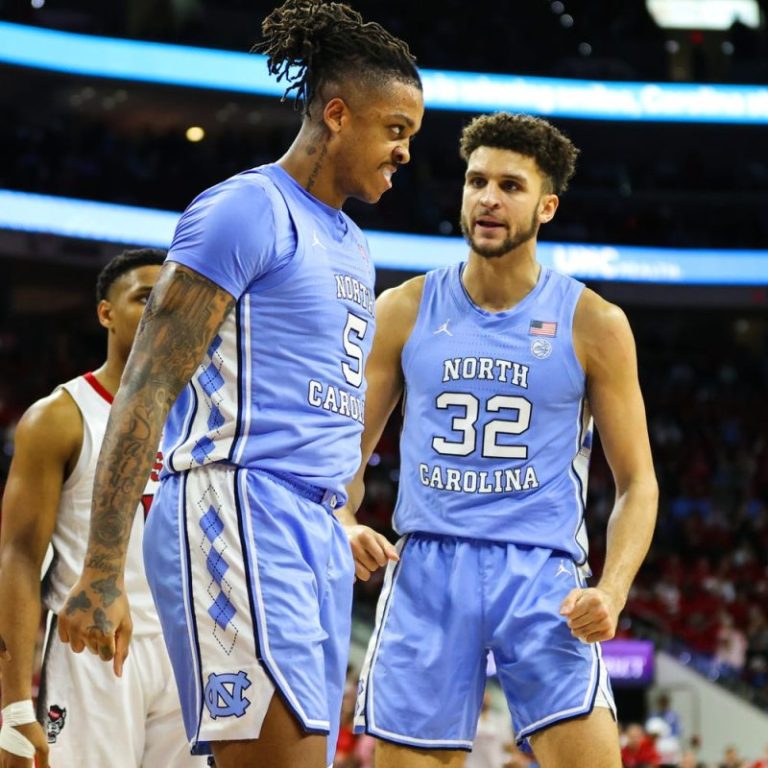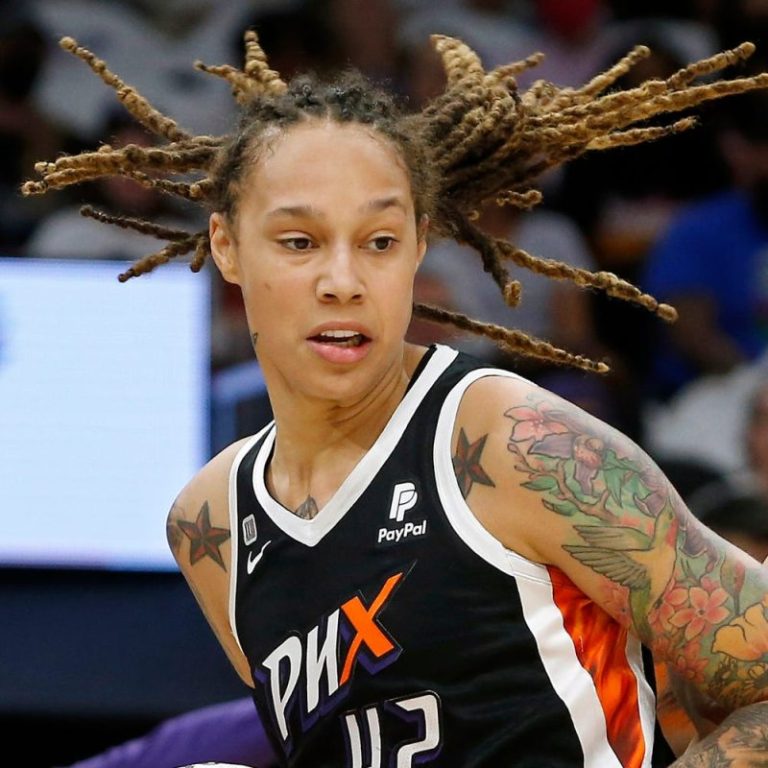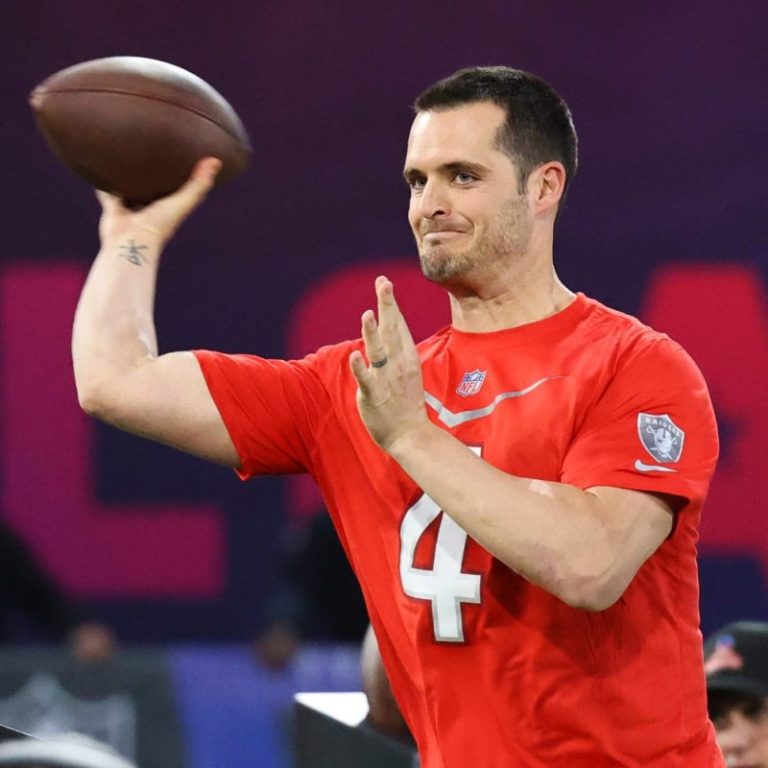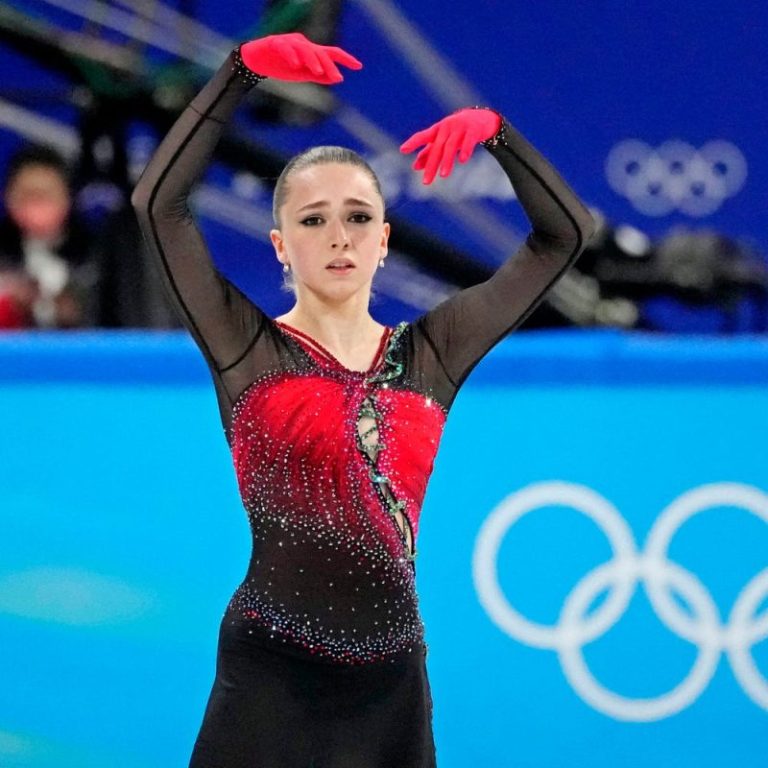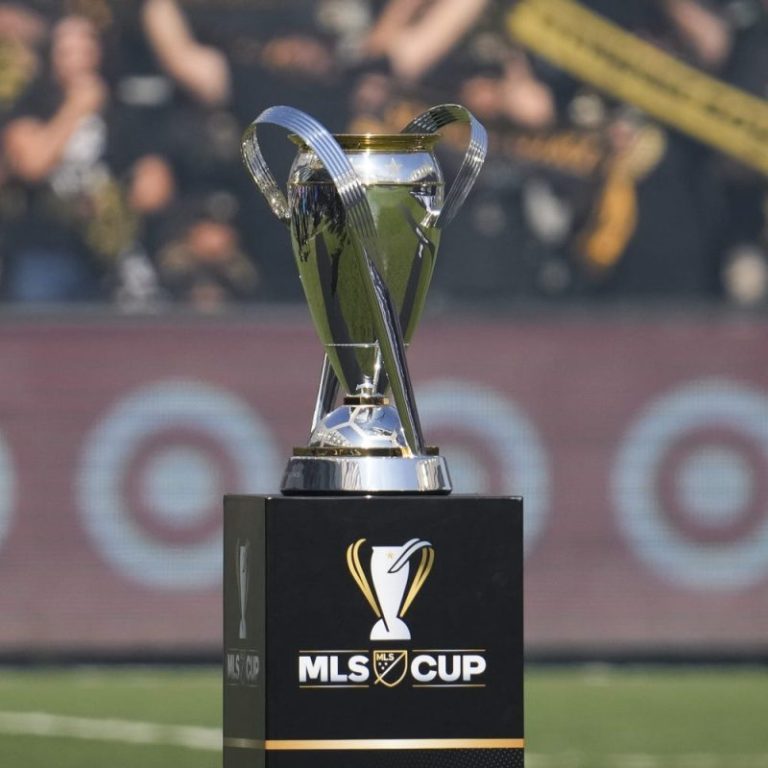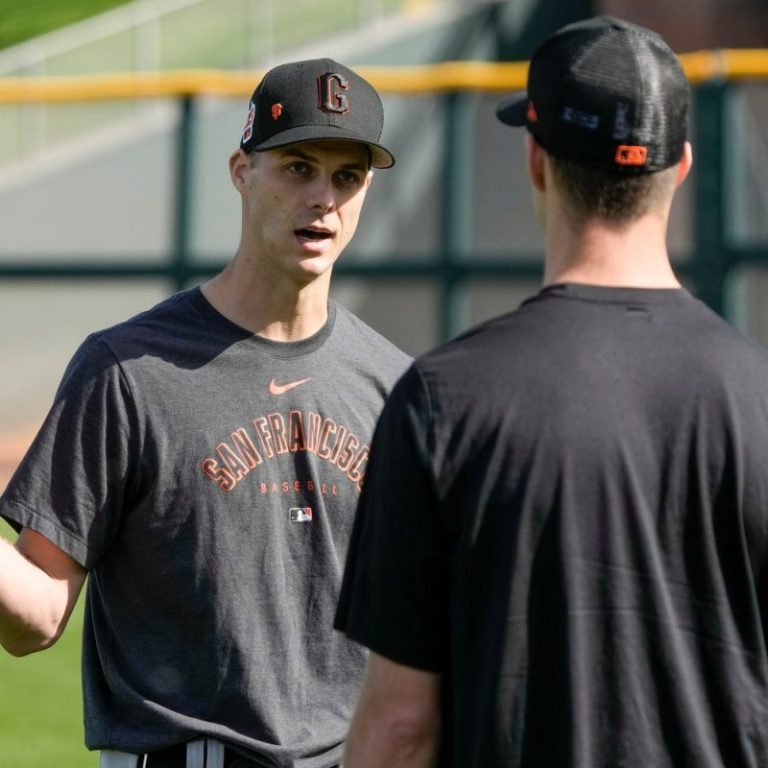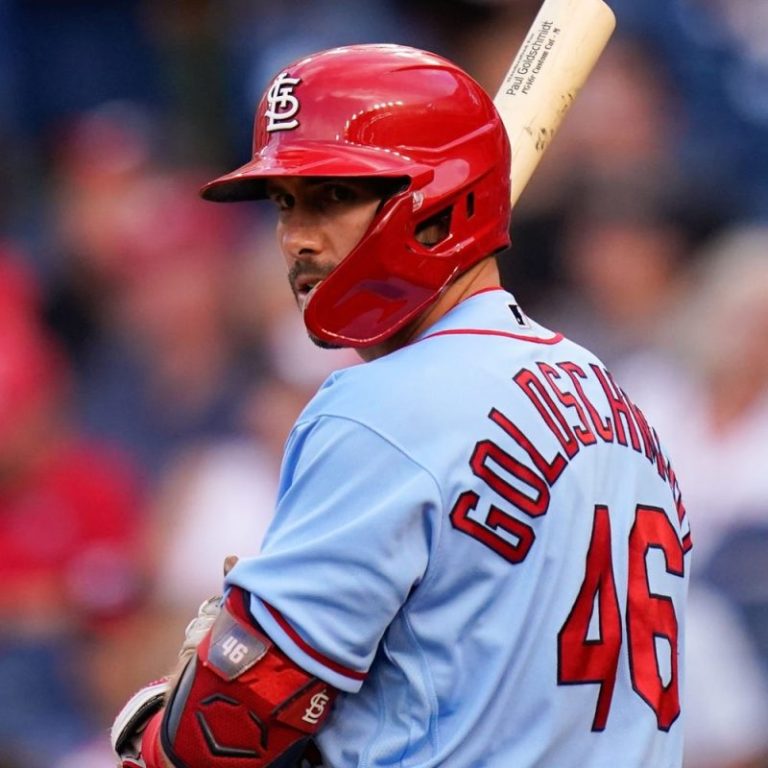SCOTTSDALE, Ariz. –Taylor Rogers walked into the San Francisco Giants clubhouse Monday morning, couldn’t find his uniform pants, so he stepped to his right, reached into the locker next to him, and immediately stole a pair.
He didn’t even bother seeing if they fit, or look at the size difference, before quickly sliding into them.
Hey, when your twin brother, Tyler, just so happens to be your teammate, too, you’re granted certain privileges.
The Rogers brothers, 32, just the fourth set of twins to play on the same major-league team, and the first since Jose and Ozzie Canseco in 1990, already are finding the advantages of being in spring training together.
They not only can share the same food preferences, play the same music, watch the same comedy, have the same hairstyle, but also can scrutinize each other’s pitching mechanics the same.
“We’re as identical,’’ Tyler says, “and it gets.’’
Now, playing together, it not only saves their parents airfare traveling from Littleton, Colorado, to see both sons at once, but the Rogers boys can save $139.99 apiece.
Instead of watching one another’s games on TV, they’ll now be able to sit next to one another in the bullpen, with the best view in the house.
“I know I’ll be spending a lot less time on the MLB app this year,’’ Taylor Rogers says, “not having to watch Tyler’s games.
Tyler: “Wow, I don’t even need to get MLB-TV anymore.’’
Taylor: “Sorry Rob [Manfred, MLB commissioner], I’m cancelling my subscription.’’
Tyler: “We’ll show him!’’
The two then started laughing hysterically at one another’s humor.
“It’s funny, it’s like that every single day,’’ Giants pitcher Anthony DeSclafani says. “They’ll both laugh so hard at their same jokes at the same time.’’
Says Giants ace Logan Webb: “They don’t leave each other’s hip. You’d think they’d have enough of each other.’’
Uh-uh.
UNDERDOG DODGERS? LA in uncharted territory after quiet winter
It’s as if the Rogers brothers are deliberately sticking even closer together, whether dressing, eating, and playing catch, or having the same close-cut haircuts, just to confuse the daylights out of their teammates.
“They’re together all of the time,’’ Giants pitcher Ross Stripling says. “They work out together. They’re catch partners. They’ve been together every minute since inception, so imagine how close they are.
“I think I can tell them apart now because Tyler I think has a little bit of a longer neck, and somehow that’s what I can cue on. But if one’s in the weight room, and the other’s in the kitchen, I have no clue.’’
The only discernible difference is that Taylor is an All-Star left-handed closer and Tyler is a right-handed submarine setup reliever.
Otherwise, good luck!
“There are some identical twins that right off the bat, you can tell the difference,’’ Giants veteran starter Alex Wood says. “But these guys, they’re about as close as you can get, the way they look. And they do everything together.’’
Giants reliever Luke Jackson says he hopes he can figure it out one day, but now just calls them, “Lefty Rog and right Rog.’’
“I’m trying to get one of them to grow a mustache right now, so I can really tell them apart,’’ Jackson says. “What’s really more messed up is that they wear the same haircut, and the names are so close, Tyler, Taylor, come on. I still don’t know which one is Tyler and which one is Taylor, even though I know one is a lefty and one is a righty.
“It’s just very hard.’’
“I think they’re doing it on purpose now,’’ Jackson says. “It’s like they’re onto us. I want to talk to their parents. That’s who I really need to talk to. Come on, virtually the same names, first off. And why did you always give them the short haircut? You should have let one of them have long hair just so you can tell them apart.
“It’s not fair.’’
Their appearance makes it almost impossible to tell apart unless you spend time with them, and notice a difference in facial expression, although the Giants will tell you they talk alike, walk alike, laugh alike and think alike.
It’s so confusing that new Giants outfielder Stephen Piscotty says he hasn’t even begun to try to figure out the difference between the two brothers yet, but is just pleased that he no longer has to face either one of them.
“Those guys have just eaten my lunch,’’ Piscotty says.
So, which one has given you the most trouble?
“The righty, having that funky motion,’’ Piscotty says. “That’s a slot you don’t see too often.’’
Oops, upon further review, Piscotty has never faced the right-handed Tyler Rogers in a major-league game. But he is 0-for-5 with three strikeouts against left-hander Taylor Rogers.
“Oh boy, now I have no confidence at all,’’ Piscotty says, “telling them apart.’’
Can you tell them apart when they’re not pitching, Giants manager Gabe Kapler was asked?
“I think I can,’’ Kapler says, “but I’d love to test that. What would I do right now if they’re right next to each other? I’d glance at both of them and make sure I call both of them, “Rog.’’
When Kapler was told that Tyler claims he’s a half-inch taller than his brother, Kapler immediately disputed the veracity of the claim.
“I think,’’ Kapler said, “they’re [screwing] with you.’’
Well, to find out the true answer, Giants’ training staff conducted an official tale of the tape during their physicals.
The result:
Taylor Rogers: 6-foot-3, 179 pounds.
Tyler Rogers: 6-foot-4, 185 pounds.
So, there you have it, ever so slightly, there actually is a difference.
Good luck trying to see the disparity with the naked eye.
If the Rogers boys have their way, their teammates will be more confused than ever by the time the spring ends.
The original prank began when Tyler crashed Taylor’s introductory zoom call, posing as a reporter named, Brennan Huff, from Will Ferrell’s character in the movie “Step Brothers.’’
“Is it safe to say,’’ Huff, aka Tyler, “the Giants have the best-looking bullpen in the National League West?’
Well, if you thought that was comical, you ain’t seen nothing yet with the pranks they plan to unleash.
Just like the time Taylor showed up for Tyler’s playoff game two years ago against the Los Angeles Dodgers. Taylor pretended to be a fan at Oracle Park, walked towards the bullpen, and heckled his brother:
“Hey, Ty! There’s no Bud Light in this stadium!’’
Or the time when Taylor decided to dress up as his brother for Halloween, yes, wearing a Giants uniform.
Or the time they swapped places for Tyler’s Spanish class. Who knew there would be a pop quiz that day? Taylor got an F. It was the last time they tried to fool their teachers.
The truth is that the Rogers boys can wear name tags across their chest, with one shaving their head and the other growing a pony-tail to assure that everyone can tell them apart, and they’ll still have the time of their lives without a single prank.
They would love to tell you this is a dream come true, but the reality is that this exceeds their wildest imagination. Taylor was an All-Star pitcher for Chatfield High in Littleton, Colorado, and played for the University of Kentucky. Tyler was on the JV team in high school, went to junior college before winding up at Austin Peay State University.
Their ultimate dream was making the big leagues, with Taylor making his major-league debut four years earlier than Tyler, but believing they could one day play on the same team together? Never.
“We talked about both being in the major leagues,’’ Tyler said, “but somehow, it never crossed our mind being on the same team.’’
Says Taylor: “I was just talking to my college roommate, Luke Maile with the Reds, and he was saying how cool it was playing for his hometown team. I’m telling him about this. And he says, ‘Dude, that has to be a dream.’
“I said, ‘This is anywhere near the realm of a dream. This is so far past it. I’m in shock every day.’’
It wasn’t until the Giants called Taylor in December, offering a three-year deal worth $33 million that it became even a possibility. Still, there was trepidation.
Taylor, a 2021 All-Star with the Minnesota Twins, wanted to make sure it was OK with his brother. Tyler had been with the organization since being drafted in 2013, and Taylor didn’t want to come in acting as if he was now leader of the bullpen.
Tyler immediately gave his blessing, but tried to hide his euphoria. Simply, he didn’t want to put any undue pressure on Taylor to sign with the Giants just so they could be together.
“I stayed out of his whole free agency,’’ Tyler says. “When I heard the Giants were calling, I was excited, but I didn’t try to sway him one way or the other. Selfishly, I wanted him to come, but I didn’t want him to feel like he had to.’’
Says Taylor: “I didn’t know if I was going to interfere. This is his tenth year in the organization. He set up his own legacy here. I wanted to be careful not to infringe on that.’’
Taylor reached a contract agreement with the Giants in the wee hours of the night Dec. 22, just five days after their 32nd birthday. It may have been 1 in the morning when the deal was reached, but with his brother sleeping downstairs in his house, he immediately woke him up to share the news.
“We kind of stood there in shock,’’ Taylor said, “like wow, this is really happening.’’
The only trouble was that he couldn’t tell anyone besides his parents for nearly a week. The agreement came just a day after Carlos Correa’s press conference was canceled when he failed the Giants’ physical. So, as much as Taylor wanted to wildly celebrate, he had to wait.
And then along came the snowstorms in the Denver, driving twice to the airport only for his Southwest flights to be cancelled, until finally he was able to travel to San Francisco for his physical. The deal became official on Dec. 28.
And, yes, there was a family celebration to behold.
“Take a look at his introductory zoom,’’ Tyler says, laughing. “Look at his picture. He looked he got hit by a truck.’’
And, just like that, the two brothers started giggling again.
They are together now, playing catch every day since they were in high school together, studying each other’s delivery, and eagerly looking forward to that first game when Tyler comes in to preserve the lead while Taylor gets the save.
“Either that, or I’m looking forward to the double-barrel,’’ Tyler says, “when we’re both warming up at the same time. I think that will be a really cool moment.’’
Says Taylor: “Come on, I don’t want that. I don’t want to double-barrel with his submarine crossarm stuff. There’s no room to double-barrel.’’
Tyler: “Then get out of the way!’’
The two started cracking up again, vowing one day soon they will start again with their pranks, just when their teammates least expect it.
“We have some plans,’’ Tyler says. “Once they can start telling us apart a little bit, then we can start playing a few jokes. There’s just way too much confusion now, so it wouldn’t even be funny.’’
Says Taylor: “Yep, you just wait.’’
And just like that, the Rogers boys started laughing again.
Follow Nightengale on Twitter: @Bnightengale
This post appeared first on USA TODAY

